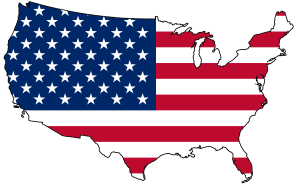Haiti -- School-age
Haiti
Official Name: Republic of Haiti
Government Type: Semi-presidential republic
Capital: Port-au-Prince
County's inhabitants: Haitians
Abbreviation: HT, HTI
Currency: Gourde
Official Language: French and Haitian Creole
Religion: Roman Catholic 55%, Protestant 29%, Voodoo 2.1%.
Many Haitian Roman Catholics are also practitioners of voodoo. Voodoo combines elements of West African spiritualism and Roman Catholic beliefs.
Population: 11.4 million (2020)
Ethnic Groups: Black 95%, mixed and White 5%

Haiti is located between the Caribbean Sea and the North Atlantic Ocean. Haiti sits on the second largest Caribbean Island which it shares with the Dominican Republic. Haiti occupies the western one-third of the island of Hispaniola, west of the Dominican Republic, and south of Cuba.
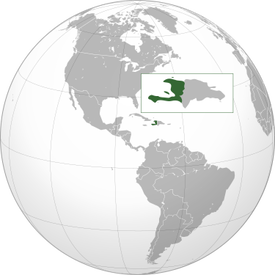
History
Haiti is the poorest country in the Americas and has experienced years of war and revolt, as well as frequent tropical storms, and earthquakes.
In 1492, Christopher Columbus landed on the island of Hispaniola, on the north coast of present-day Haiti, at a small bay named San Nicola now called Môle-Saint-Nicolas. Christopher Columbus claimed Haiti for Spain. The native Taino were almost wiped out by Spanish settlers. Spain and France brought African slaves to work in the mines and on the plantations. France established a presence on Hispaniola in the early 17th century. Spain ceded to the French the western third of the island, which later became Haiti. The slaves rebelled and won their independence in 1804. Since then, the country has endured the rule of dictators and the military.
Internal political instability led the country to be occupied by U.S. Marines from 1915 to 1934. Francois "Papa Doc" Duvalier and then his son Jean-Claude "Baby Doc" Duvalier (was forced to flee the country in 1986) were ruthless dictators that led repressive and corrupt regimes that ruled Haiti in 1957-1971 and 1971-1986. Haiti held its first free presidential election in 1990. In 1991, a military group overthrew President Jean-Bertrand Aristide. U.S. Military troops would help return President Jean-Bertrand Aristide to office. During Aristide's second term rebels would force the president to step down.
In 2010, Haiti suffered a major disaster when a earthquake stuck, the worst earthquake to hit the region in 200 years. Hundred of thousands of people died and many buildings were destroyed. In 2021, President Moise was assassinated in July, and just over a month later a 7.2 earthquake struck the southern part of the country requiring more emergency humanitarian aid.
Flag of Haiti

In 1803 the new blue-red flag was the symbol of Haitian people, representing the black and mulatto populations. In 1986 the old blue-red flag was reestablished. In the center of the flag is the coat of arms that consists of a palm tree with a liberty cap at the top of the tree. The palm tree with the liberty cap is flanked by flags, rifles, hatchets, cannon, anchors, masts, and other symbols. The motto “L’Union fait la force” (“Union makes strength”) is also included on the coat of arms.
Super Quick History of Haiti Video
Land
The name Haiti means mountains in the Arawak language.
Haiti consists of two peninsulas, which are separated by the Golfe de la Gonâve. Haiti's terrain consists mainly of rugged mountains interspersed with small coastal plains and small valleys. The highest point of in Haiti is the Pic de la Selle, reaches a height of 2,680 meters (8,793 feet) above sea level. The land is semiarid (low rainfall) where mountains in the east cut off the trade winds.
Climate
Haiti is a tropical island; hot and humid with a rainy season.
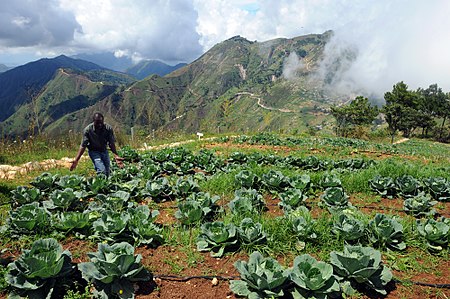
Rows of cabbage in Haiti
Natural Resources
Haiti is a country steeped in poverty and hunger. Haiti has a tropical flora that has suffered centuries of deforestation which has had an impact on the soil and water. The most common crops are coffee and sugar.

The border between Haiti (left) and the Dominican Republic highlights the deforestation of Haiti.
Plants
The forests of Haiti includes, ferns, orchids, acacias, mahogany, pine and cedar. Fast growing trees that are not native to Haiti are being planted that is tied the loss of trees to halt soil erosion and lessen the risk of mud slides.
Animals
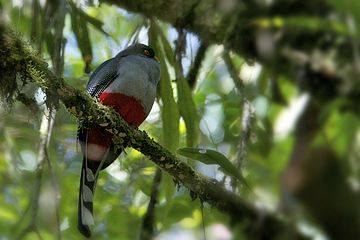
The National Bird of Haiti - Hispaniolan trogon
The Hispaniolan trogon was chosen as the national bird due to the threat of extinction.
Animals in Haiti include: monkey, bats, crocodile. Along the shores are : goose, flamingo pelican, snails, wild duck, egret, and snipe. In the water: Whales and manatees are found in the water. Some birds are: hawk, white owl, kingfisher, woodpecker, pigeon, and dove. Iguana's are few as they are almost extinct in Haiti.
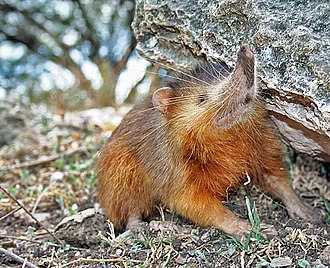
The Hispaniolan solenodon are venomous mammals that are native to the island of Hispaniola.
Haiti Is Famous For
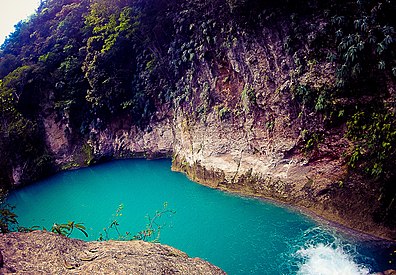
Bassin Bleu is one of the most beautiful waterfalls in Haiti.
Haiti has beautiful beaches and mountains.
The Creole cuisine of Haiti is a blend of African, French, indigenous Taino, and Spanish influence.
Make Ji Papaye (papaya drink)
Haiti became the world's first independent black republic with the revolution that freed it from slavery and French rule.

The Citadelle Laferrière is Haiti's sole UNESCO heritage site. It is an amazing mountain fortress that was part of a larger fortification system built to protect Haiti, after is successful revolt for independence from France, from future attacks.
Haitian Products
Haiti is the poorest country in the Western Hemisphere. Many Haitians live and work abroad, sending money to family members in Haiti.
The top export of Haiti is clothing. The largest exports are knit sweaters and knit T-shirts that are exported to the United States, Canada, Mexico, France, and India.
The top import of Haiti is cotton fabrics. Haiti top imports are: rice petroleum, knitted fabrics, palm oil from the United States, Dominican Republic, China, Turkey, and India
See Also


